Myth of the Vietnam War #1
Common belief is that most Vietnam veterans were drafted.
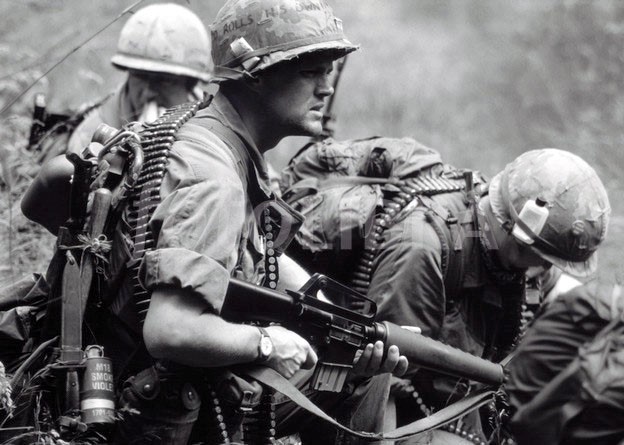
Fact: 2/3 of the men who served in Vietnam were volunteers. 2/3 of the men who served in World War II were drafted. Approximately 70% of those killed in Vietnam were volunteers.
Myth of the Vietnam War #2
Common belief that the media reported suicides among Vietnam veterans range from 50,000 to 100,000 – 6 to 11 times the non-Vietnam veteran population.
Fact: Mortality studies show that 9,000 is a better estimate. “The CDC Vietnam Experience Study Mortality Assessment showed that during the first 5 years after discharge, deaths from suicide were 1.7 times more likely among Vietnam veterans than non-Vietnam veterans. After that initial post-service period, Vietnam veterans were no more likely to die from suicide than non-Vietnam veterans. In fact, after the 5-year post-service period, the rate of suicides is less in the Vietnam veterans’ group.
Myth of the Vietnam War #3
A common belief is that a disproportionate number of blacks were killed in the Vietnam War.
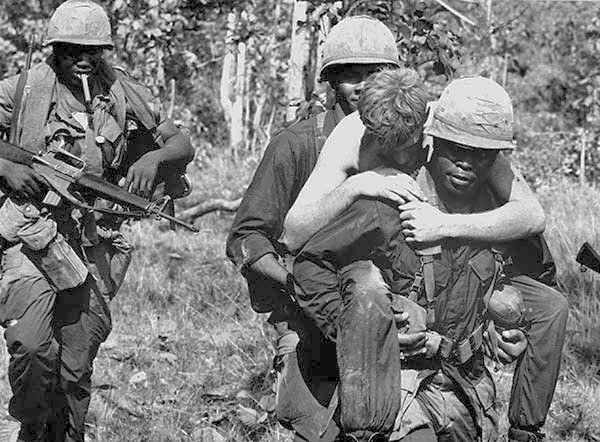
Fact: 86% of the men who died in Vietnam were Caucasians, 12.5% were black, and 1.2% were other races. Sociologists Charles C. Moskos and John Sibley Butler, in their recently published book “All That We Can Be,” said they analyzed the claim that blacks were used like cannon fodder during Vietnam “and can report definitely that this charge is untrue. Black fatalities amounted to 12 percent of all Americans killed in Southeast Asia, a figure proportional to the number of blacks in the U.S. population at the time and slightly lower than the proportion of blacks in the Army at the close of the war.”
Myth of the Vietnam War #4
A common belief is that the war was fought largely by the poor and uneducated.
Fact: Servicemen who went to Vietnam from well-to-do areas had a slightly elevated risk of dying because they were more likely to be pilots or infantry officers. Vietnam Veterans were the best-educated forces our nation had ever sent into combat. 79% had a high school education or better.
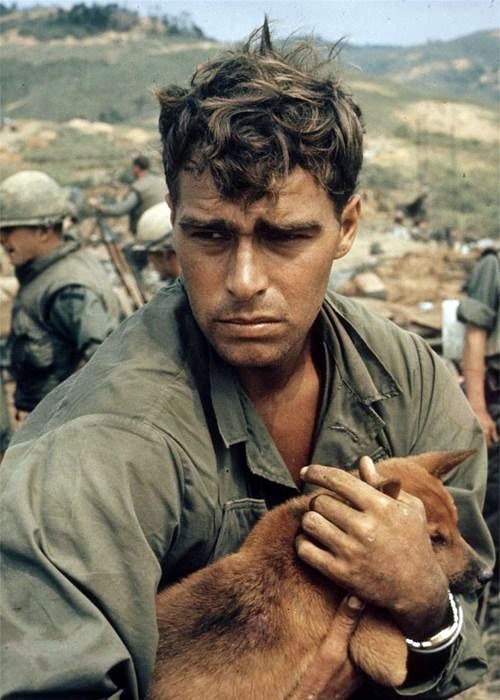
Myth of the Vietnam War #5
The common belief is the average age of an infantryman fighting in Vietnam was 19.
Fact: Assuming KIAs accurately represented age groups serving in Vietnam, the average age of an infantryman (MOS 11B) serving in Vietnam to be 19 years old is a myth, it is actually 22. None of the enlisted grades have an average age of less than 20. The average man who fought in World War II was 26 years of age.
Myth of the Vietnam War #6
The common belief is that the domino theory was proved false.
Fact: The domino theory was accurate. The ASEAN (Association of Southeast Asian Nations) countries, Philippines, Indonesia, Malaysia, Singapore and Thailand stayed free of Communism because of the U.S. commitment to Vietnam. The Indonesians threw the Soviets out in 1966 because of America’s commitment in Vietnam. Without that commitment, Communism would have swept all the way to the Malacca Straits that is south of Singapore and of great strategic importance to the free world. If you ask people who live in these countries that won the war in Vietnam, they have a different opinion from the American news media. The Vietnam War was the turning point for Communism.
Myth of the Vietnam War #7
The common belief is that the fighting in Vietnam was not as intense as in World War II.
Fact: The average infantryman in the South Pacific during World War II saw about 40 days of combat in four years. The average infantryman in Vietnam saw about 240 days of combat in one year thanks to the mobility of the helicopter. One out of every 10 Americans who served in Vietnam was a casualty. 58,148 were killed and 304,000 wounded out of 2.7 million who served. Although the percent that died is similar to other wars, amputations or crippling wounds were 300 percent higher than in World War II.
75,000 Vietnam veterans are severely disabled. MEDEVAC helicopters flew nearly 500,000 missions. Over 900,000 patients were airlifted (nearly half were American). The average time lapse between wounding to hospitalization was less than one hour. As a result, less than one percent of all Americans wounded, who survived the first 24 hours, died. The helicopter provided unprecedented mobility. Without the helicopter it would have taken three times as many troops to secure the 800-mile border with Cambodia and Laos (the politicians thought the Geneva Conventions of 1954 and the Geneva Accords or 1962 would secure the border).
Myth of the Vietnam War #8
The common belief that Kim Phuc, the little nine-year-old Vietnamese girl running naked from the napalm strike near Trang Bang on 8 June 1972 (shown a million times on American television), was burned by Americans bombing Trang Bang.
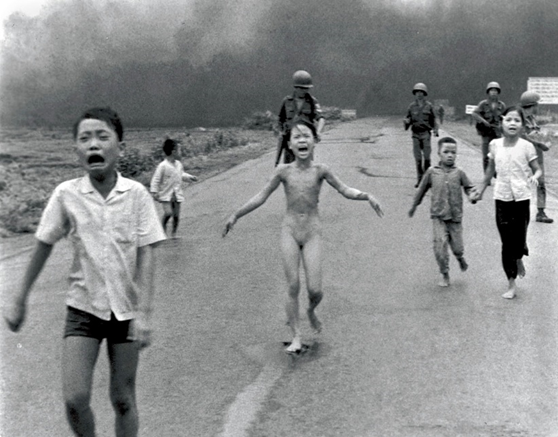
Fact: No American had involvement in this incident near Trang Bang that burned Phan Thi Kim Phuc. The planes doing the bombing near the village were VNAF (Vietnam Air Force) and were being flown by Vietnamese pilots in support of South Vietnamese troops on the ground. The Vietnamese pilot who dropped the napalm in error is currently living in the United States. Even the AP photographer, Nick Ut, who took the picture, was Vietnamese. The incident in the photo took place on the second day of a three-day battle between the North Vietnamese Army (NVA) who occupied the village of Trang Bang and the ARVN (Army of the Republic of Vietnam) who were trying to force the NVA out of the village. Recent reports in the news media that an American commander ordered the airstrike that burned Kim Phuc are incorrect. There were no Americans involved in any capacity. “We (Americans) had nothing to do with controlling VNAF,” according to Lieutenant General (Ret) James F. Hollingsworth, the Commanding General of TRAC at that time. Also, it has been incorrectly reported that two of Kim Phuc’s brothers were killed in this incident. They were Kim’s cousins not her brothers.
Myth of the Vietnam War #9
The common belief that the United States lost the war in Vietnam.
Fact: The American military was not defeated in Vietnam. The American military did not lose a battle of any consequence. From a military standpoint, it was almost an unprecedented performance. General Westmoreland quoting Douglas Pike (a professor at the University of California, Berkeley), a major military defeat for the VC and NVA. The United States Did Not Lose the War in Vietnam; The South Vietnamese did after the U.S. Congress cut off funding. The South Vietnamese ran out of fuel, ammunition and other supplies because of a lack of support from Congress, while the North Vietnamese were very well supplied by China and the Soviet Union. The fall of Saigon happened 30 April 1975, two years AFTER the American military left Vietnam. The last American troops departed in their entirety 29 March 1973. How could we lose a war we had already stopped fighting? We fought to an agreed stalemate. The peace settlement was signed in Paris on 27 January 1973. It called for release of all U.S. prisoners, withdrawal of U.S. forces, limitation of both sides’ forces inside South Vietnam and a commitment to peaceful reunification. The 140,000 evacuees in April 1975 during the fall of Saigon consisted almost entirely of civilians and Vietnamese military, NOT American military running for their lives. There were almost twice as many casualties in Southeast Asia (primarily Cambodia) the first two years after the fall of Saigon in 1975 than there were during the ten years the U.S. was involved in Vietnam.
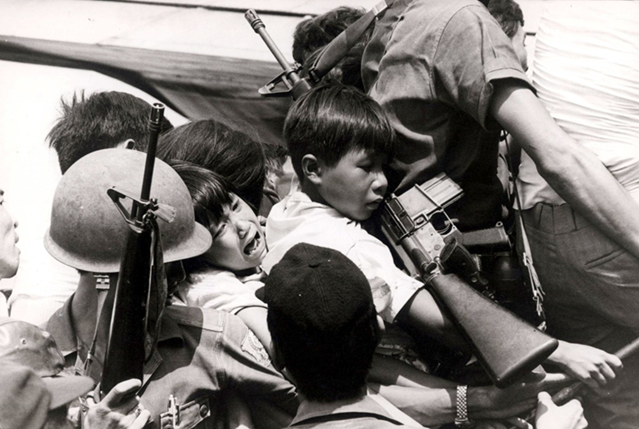
Thanks for the perceived loss and the countless assassinations and torture visited upon Vietnamese, Laotians, and Cambodians goes mainly to the American media and their undying support-by-misrepresentation of the anti-War movement in the United States. As with much of the Vietnam War, the news media misreported and misinterpreted the 1968 Tet Offensive. It was reported as an overwhelming success for the Communist forces and a decided defeat for the U.S. forces. Nothing could be further from the truth. Despite initial victories by the Communists forces, the Offensive resulted in a major defeat of those forces. General Vo Nguyen Giap, the designer of the Tet Offensive, is considered by some as ranking with Wellington, Grant, Lee, and MacArthur as a great commander. Still, militarily, the Tet Offensive was a total defeat of the Communist forces on all fronts. It resulted in the death of some 45,000 NVA troops and the complete, if not total destruction of the Viet Cong elements in South Vietnam. The Organization of the Viet Cong Units in the South never recovered. The Tet Offensive succeeded on only one front and that was the News front and the political arena. This was another example in the Vietnam War of an inaccuracy becoming the perceived truth. However, inaccurately reported, the News Media made the Tet Offensive famous.
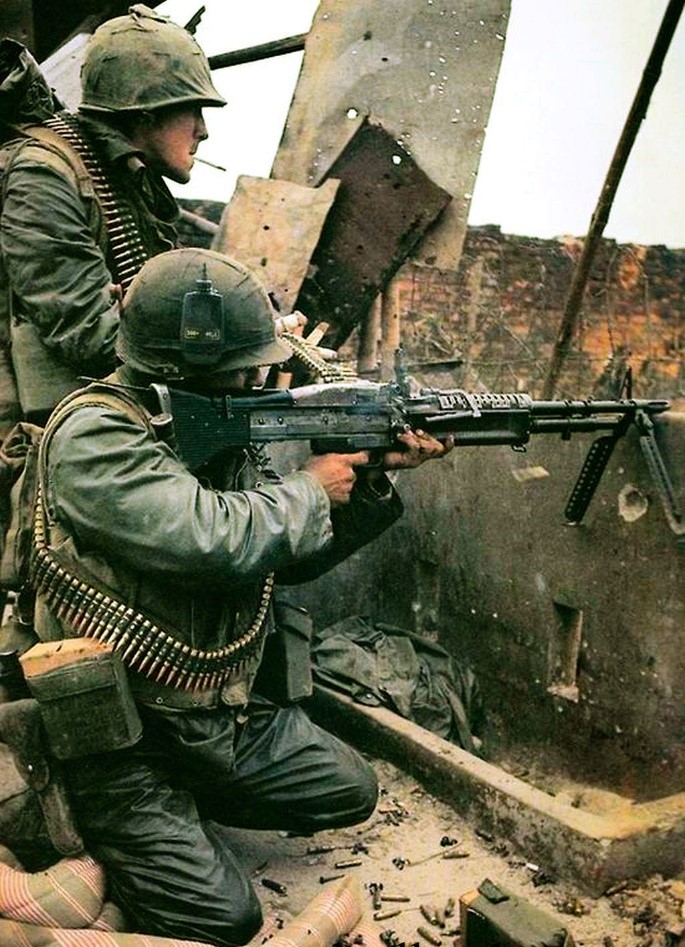

All so true. I was there 68-69.
I was 18 when I hit the dirt with 1st Marines.
Navy Hospital Corpsman have the dubious honor as the highest killed rate. 776 Corpsman names on the wall.
Fake news has been around a long time and continues today.
Served 1967 USN
There was another myth that wasn’t listed, and it was about agent orange. The truth is that very few troops were sprayed with AO because the missions were scheduled between the Army, Marines and the Air Force to prevent the spraying of the troops. If any gunfire was present during the spray run the mission would be aborted and the fighters were called in to strafe the area then the mission could be completed.
If troops were sprayed on it was spray to kill the mosquitos around the base camps.
I was a member of Ranch hand the aerial spray group in Viet Nam.
From 8-68 to 2-69 I was a microwave radio repairman attached to the MP unit on 7000′ high Pr’Line Mountain, the 2nd highest mountain in Nam. It was a communications relay site +/-10 to15 miles west of Dalat, towards Cam Rhan Bay, part of the backbone of the US communications system for SE Asia. It is presently a cell tower site.
We used hand pump up sprayers and sprayed so called agent orange around the hill and the perimeter. If it didn’t defoliate quickly enough we sprayed diesel and set the vegetation on fire to remove it asap… We also handled the leaky 55 gallon drums while unloading trucks from the weekly convoy from Dalat. Another route of exposure for us was working on the concertina wire around the perimeter which had been sprayed. We would do this in the early morning when it was cool and our pants would get soaked from walking and kneeling in the brown grass, because at 7000′ elevation it was very cool and there would be a lot of dew on things. There were even times there was ice on puddles.
I’ve never heard anyone say a bad word about you guys spraying anyone on purpose. You all were doing a necessary job, but there were times when we were out on patrols off the mountain that your ops wouldn’t have had any way of knowing we were where we were if you had a mission in the area. Bad things and accidents happened in Nam, but The biggest purveyor of myths like you mentioned was from the US media, and they haven’t stopped since. When I got home in 8-69 and watched the “news” I told to my family that they aren’t talking about where I just came from, but they didn’t get it.
Welcome Home!
Look up my name on Flickr to see my photos of the mountain and from Iraq, where I was an Army contractor.
I was 19 and in the 173rdABN C/1/503 Bien Hoa Oct.13 1965—-Oct.13 1966 seen combat on Hill65 operation Hump Nov 8 .65 op. Silver City, op Souix city search & destroy war zone D.nearly died from Malaria. Only received small shrapnel wounds.
Blacks were 10 percent of the population and 30 percent of the fighting force….so 12 percent is a per Capita increase of of 50 percent.
Not much is written on the “mini tet” in May / June of 1968. NVA forces attack Cholon area of Saigon and Thun son nut.
I was a medic, C 1/502 inf 101 Airborne. December 67- 68. Our first unit WIA and KIA were both medics.
I agree with article all the way–until Myth #9. We didn’t lose in Vietnam? We most certainly did. Our goal in 1954, when we took over the colonial war from the French was to create the a client, semi-colonial country called South Vietnam and deny reunification to that sector of Vietnamese society that wanted it. Then we spent trillions of dollars and millions of lives towards that goal. After an amazing waste of treasure and blood, in 1975, Vietnam was reunited. The rest about never losing a battle is simple forgetfulness: For example, the 7th Cav got its assets kicked in the Ia Drang, despite the attempt to whitewash that military disaster in the movie that ignored the fact that 2/3 of the American casualties happened two days after the movie ended. I could go on…there were others. Yeah, we killed a lot more of them than they killed of us. So? We were (and are) the most industrialized military force in history–they were peasants with no industrial base and (in the South) no air power. The fact is, we were fighting a different war than the North Vietnamese Army and the National Liberation Front, and they won. You do a disservice to our sacrifices in so blatantly denying simple facts. MC, grunt, Vietnam 69-70.
I found a typo in the comment I just submitted: Please post this one instead:
I agree with article all the way–until Myth #9. We didn’t lose in Vietnam? We most certainly did. Our goal in 1954, when we took over the colonial war from the French, was to create a semi-colonial client state called South Vietnam and deny reunification to that sector of Vietnamese society that wanted it. Then we spent trillions of dollars and millions of lives towards that goal. After an amazing waste of treasure and blood, in 1975, Vietnam was reunited. The rest about never losing a battle is simple forgetfulness: For example, the 7th Cav got its assets kicked in the Ia Drang, despite the attempt to whitewash that military disaster in the movie that ignored the fact that 2/3 of the American casualties happened two days after the movie ended. I could go on…there were others. Yeah, we killed a lot more of them than they killed of us. So? We were (and are) the most industrialized military force in history–they were peasants with no industrial base and (in the South) no air power. The fact is, we were fighting a different war than the North Vietnamese Army and the National Liberation Front, and they won. You do a disservice to our sacrifices in so blatantly denying simple facts. MC, grunt, Vietnam 69-70.
Even your submission of so called corrections don’t justify that we lost the war. Every fighting man knows that we did in fact win! More of a tribute to those who were killed and wounded.
You may still hold a grudge that you served but little, do you alone, represent those that never lost a battle or the war. It was in fact that the politicians sitting behind a desk did. If anyone shows a disservice it’s you who “blatantly deny” the true facts of our involvement…
Myth #11 America alone fought the “Illegal Campaign” ie. Vietnam
Many many ‘Volunteers’ from countries around the globe put their lives on the line and many subsequently paid the ultimate price
I volunteered as a Canadian citizen from a small municipality that produced pulp and paper on the N shore of Lake Superior in the Province of Ontario Canada
USMC 1967-1973
3rd Recon 3rd Marines –
Quang Tri Vietnam (1968-1970)
Was at Con Thien 68/69 with 3rd tanks A co.
Great story and so many truths. I was a 21 year old Army helicopter pilot volunteer when I served there from 72-73.
The USA Was involved in Vietnam for 23 years not 10. Harry Truman started our involvement with US “advisors” in June 1950 and by the time Ike took office in Jan 53 the US Advisory strength was well over 10,000. And yes those advisors were in combat and many died but those that got us into that quagmire keep it quiet. Truman signed a military aid treaty with the French and their South Viet puppet government. I personally have known Army senior NCO;s who served as many a 3 tours there before 1960. I also have known an Air Force pilot and his jet repairman and served together in Laos “black ops” in 1955. There were to many Americans especially politicians making big money off that war including a former president. The very president who expanded the war near Easter 1966. How I got to Hue Phu Bai Marine airfield with on orders no weapon. Guys being transferred from stateside to the bases on the Pacific rim from Mar to Aug 1966 found themselves in Nam under the Mass murderer LBJ
I have a strong feeling that my posting will be deleted by this site because it does not agree wit the media and political views of out involvement in RVN
As an Admin Officer in a MABS unit in the late ’70’s I checked in a lot of senior SNCO’s when they got transferred to Beaufort. There were a lot who had VN service from the late 50’s or early 60’s in their records. None would ever talk much about it.
Don Klaumann United States Army 199th Light Infantry Bien Hoa, Vietnam 1968 – 69
I also agree that the United States involvement in the Vietnam War was in support of freedom for the South Vietnamese. What I do disagree with is that many have said that Vietnam was NOT a war and is not considered in the classroom as a history item. I have lost many in Vietnam because of the “war” which we fought so hard to defend.
I was 18 when I got to Nam, turned 19 there, and was with K 3/5, 70, I agree, WE didn’t lose, it was politically run, that’s why it’s considered a loss. I was a volunteer at 17, 4 yrs., and tried for a long time to vol. for Nam, finally got the orders to go, and don’t regret going. Wasn’t all combat, had some good times(for a war zone), and only problem, my memory isn’t that good , (PTSD?).
Obviously the media were low life liars back then. I quit taking the newspaper and watching TV over 5 years ago. The degree of lying from these people is mind boggling.
The problem is that you guys who believe we won militarily is that you don’t recognize that publicly we lost! And without the support of the public, the American people, the war could not go on. Johnson in the military establishment was constantly saying that we are winning the war. The Tet Offensive proved definitively that the Viet Cong and the North Vietnamese were committed to winning this war with it without regard for cost of lives. And they ultimately did win the war.
Marine Corps
I was an Airman (E3) at 19 year old when I arrived in Vietnam Phu Bia as a SAR crewman on a Sea King helo. Only in country for short stays when carrier left for maintenance in Sasebo or Subic. I didn’t sign on to operate a M60, I was an ASW* tech. I did my assigned job, felt Okay with it when I left 66-67. But was disappointed with the peace settlement in 1973. Good Story. Maybe if we heard more positive information we would not have as many homeless Vietnam Vets still yet today. (*Antisubmarine Warfare Tech )
Received my Purple in Khe Sahn May of 67 on hill 861. The greenest hills I had ever seen,also the thickest and deadliest.I agree with every myth and knew almost all of them before I read the article. Semper Fi to my brothers I lost on hills 861,881 South, and 881 North.Still in my memory as if it was yesterday…..the good and the bad.
Received my Purple in Khe Sahn, May of 67 on hill 861. Greenest hills I had ever seen,also the thickest in places and deadly all over. I agree with the article and can honestly say I knew them all before reading the article. We didn’t lose Vietnam, our media did,along with the liberal college kids that run our government to this day. Semper Fi to my brothers I lost on hills 861,881 South,and 881 North. You are all in memories to this day,both the good times and the bad times. I wish they could have come home alive also,to live a long life….so many young lives cut short. I learned at Khe Sahn that when it’s your time it’s your time…nothing you can do about it,it’s called fate. As the great John Wayne once said “Courage is being scared to death,but saddling up anyway.” Those were the days when you faced the odds,your churning gut,and the NVA, and still won.
When I returned from Nam (Aug 1970) my hitch was up. So, I was processed out in Oakland, California. When I was finished with processing, they handed me a set of “Dress Greens”, complete with my awards and decorations, including my Purple Heart. I was damn proud of what I, as a draftee, had done for “God & Country”. But we were warned that we should go to the PX and purchase civilian clothes for our travel home. Most all of us were in the dark about just how twisted the media portrayed us and our military service. And we weren’t ready for what we were about to endure. I was stubborn and insisted on wearing my uniform on the trip home. Once I got to San Francisco airport, it didn’t take long to run into many people who looked away or looked me right in the eyes with a disgusted sneer on their face. it wasn’t until a grey haired, older gentleman came up to me and said ” Don’t let them get under your skin, Sarge. They are completely clueless.” He was right. From then until I arrived at my final destination of Syracuse New York, I looked everyone right in the eyes and smiled. So where do you think all of these folks got their ideas concerning us Vietnam Veterans?? The MEDIA!!! To this day, I take everything I hear and see on TV, with a big grain of salt.
I was there 69-70 and was attached with Dusters Quad 50s being a machanic and Fuel Truck driver and made it home and still here. Saw some action but i was in a Fire Base being in the Field was only to Fill the Gas tanks on the Dusters on Strong Point or one t6hem brake I had to fix it there and same thing every day.